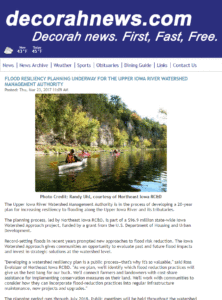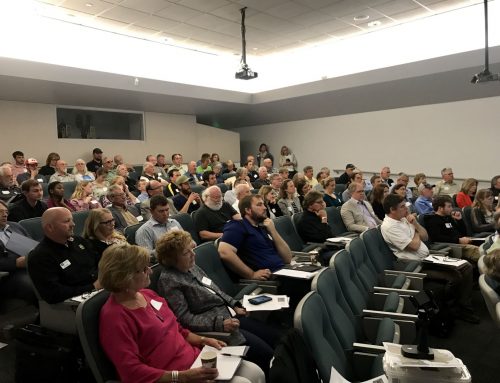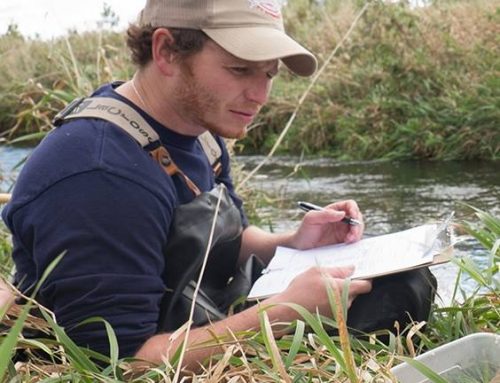The Upper Iowa Watershed Management Authority recently kicked-off a process to develop a 20-year plan for increasing resiliency to flooding along the Upper Iowa River and its tributaries. The planning process, led by Northeast Iowa RC&D, is part of a $96.9 million state-wide Iowa Watershed Approach project, funded by a grant from the U.S. Department of Housing and Urban Development.
Record-setting floods in recent years prompted new approaches to flood risk reduction. The Iowa Watershed Approach gives communities an opportunity to evaluate past and future flood impacts and invest in strategic solutions at the watershed level.
“Developing a watershed resiliency plan is a public process—that’s why it’s so valuable,” said Ross Evelsizer of Northeast Iowa RC&D. “As we plan, we’ll identify which flood reduction practices will give us the best bang for our buck. We’ll connect farmers and landowners with cost-share assistance for implementing conservation measures on their land. We’ll work with communities to consider how they can incorporate flood-reduction practices into regular infrastructure maintenance, new projects and upgrades.”
The planning period runs through July 2018. Public meetings will be held throughout the watershed to give residents a chance to learn more and give input.
John Beard is the chair of the Upper Iowa WMA. “I like the watershed approach for accountability,” said Beard. “It is easy to measure at the base of the watershed and the up the tributary, so we can isolate where the problems are and see if the measures we install result in better quality water and less flooding.”
“All the people in a watershed are either upstream or downstream from their neighbors—or both,” added Beard. “We get that idea, and it builds cooperation. I think that’s really important—it’s more than just the money saved, it’s the whole idea of pride and taking care of our surroundings.”
The Upper Iowa WMA formed in 2015 as a partnership of cities, counties and conservation districts, who have committed to work together in their shared watershed to reduce the risk of flooding and increase water quality. To learn more about the Upper Iowa WMA, or about the resiliency planning process, visit their website at www.upperiowariver.org.
http://www.decorahnews.com/news-stories/2017/03/16120.html



